The word comes from Jonas Bertelsen’s skrammolog och skrammologi - he was a “pedagogog” at the first junk playground in Emdrup, Copenhagen when it opened in 1943, designed by the architect Sørensen (who once claimed that the junk playground was simultaneously the ugliest and most beautiful thing he had ever created).
A skrammolog, according to Bertelsen, is an adult who assists the children with materials and good advice, and who occasionally takes them by the hand when they have difficulty getting along. But the philosophy was that children who were allowed to do everything themselves, would take responsibility and ensure peace and order. This was to be understood quite literally. The junk playground had its own children's police with an attached prison, if not the presumptuous children were actually tied to a totem pole and judged in front of the other children. It is also worth pointing out that this playground was in part grounded in the concern of parents worried about their son’s being caught by the occupying Nazis at the time (because there was a presumption that boy’s play is boisterous and destructive); also it was not until the 1980’s that safety and preventing bullying was considered something to be concerned about - injuries included - broken arms and legs and head injuries when children fell or got crushed in playground equipment – or fatal accidents where children suffocated in playground equipment or suffocated from smoke when playing with fire in self-built dens. And research into the history of playgrounds in Copenhagen also indicate that the views of children were seldom considered - "The children haven't had much influence. Of course, they've accepted the offers they've been given, and they've also fought to preserve something when it's been threatened. But overall, they haven't had much to say," says Ning de Coninck-Smith.
One of the ten modules on my playarista training is about loose parts theory and the stuff we use to curate space with a high play value. I feel that the word junkologist would fit well - but not with a 1940’s view of play and children but a more intersectional understanding of play and children. Because gone are the days (I hope) where we think that girls gather and sing, sew and bake while the boys need to be tamed by releasing their wild energy. Also play was considered a way of training children physically and to control them to become healthy and civilised adults (why early playgrounds consisted of gym-like equipment) - which, interestingly (or worryingly), we are currently seeing a return to this idea of playgrounds re-focusing on physical training. Play and playgrounds have changed over the decades - and for the most part these have been tied not only to ideas about childhood but also political ideologies of how to claim people power and to raise children to be democratic. At Brede in Kongens Lyngby in North Zealand, the garden architect Erik Mygind established the so-called Huleby (Cave City) in 1957. The children built sheds, and then they had to play out representative democracy by establishing a children's town council with the election of a mayor, police chief and postman. The area had a goat, a lot of rabbits and its own newspaper, “The Huleby Post”. But things didn't go so well with Cave City – after a few years the children ended up getting fed up (maybe something to do with the “had to play” part??). The animals weren't cared for properly, and a minor civil war broke out with stone throwing and teasing! The problems of the cave city contributed to a future focus on interactive educators and a more direct approach to construction, as seen in today's construction playgrounds. While in the UK and other English speaking countries where playwork exists, the term Adventure Playground is used rather than the original junk playgrounds - while here in Scandinavia they were renamed as Construction Playgrounds to reflect how they evolved over time.
But back to the words junkology and junkologist.
It reminds me of one of my childhood favourite past-times in school - junk-modelling. Where there was an area in the classroom where we brought our empty cereal boxes, loo rolls and other stuff from home with the potential to create and play. I also remember the pride of bringing a bag of stuff to school to replenish the supplies and feeling like a hero for a few moments because the stuff was exactly what someone needed to be able to finish off their project, or start a new one.
Every once in a while, usually on a day where the weather was too bad to go outside there was the grand sorting of the junk modelling area… which I always found entirely exciting, because it was like digging for treasure… forgotten and hidden things revealed themselves, we sorted them, and we prepared for future days of creativity. At the age of seven I made a Tin Man costume to wear in a performance of The Wizard of Oz that evolved from our play ( I still feel so grateful to have had a teacher to recognise the value of our play, and the time, space and permission we were given to take our repetitive play to performance level).
This is a co-curated idea of junk.
The junkologist is not just thinking about what stuff will inspire play, creativity, language, math through autonomy and flow etc - but is also empowering the children to think about it too, and to contribute towards sustaining and maintaining a good supply and presentation of the junk for their own benefit.
Because it is not just about the stuff we make available, and thinking about our relationships with the stuff, and the relationships between the stuff - but also thinking about how it is presented will affect that relationship and how we think about it and ultimately the possibilities we consider.
Sometimes a junk pile is the permission that the children need.
Sometimes it needs to be displayed like it’s in a fancy boutique
Sometimes it needs to be arranged by size, material, colour etc
Sometimes it need to be thinned out
Sometimes it needs to be in extreme amounts.
There is no one way. Junkology is the understanding of the stuff, the children, the space, the play and current needs. And the moment we fall for the talk that we must present the stuff in a specific way all of the time for it to be of value, is the moment we have stopped being a junkologist and are no longer seeking knowledge about the stuff, the play, the interactions, the possibilities and the affordances - we have opted for the “safe option” which is seldom the option with the most play and learning value over time.
I find myself often a little frustrated by the term “loose parts” because the focus is on the objects rather than the theory. So the term junkologist is kind of exciting, because it is placing the focus on our human understanding of the stuff.
Since I also think that it is not just junk that we use in play and creativity within loose part theory - that maybe the term stuffology should be used, and that we become stuffologist? We understand the potential and affordances of the stuff we are finding, offering, curating and interacting with.
What do you think?
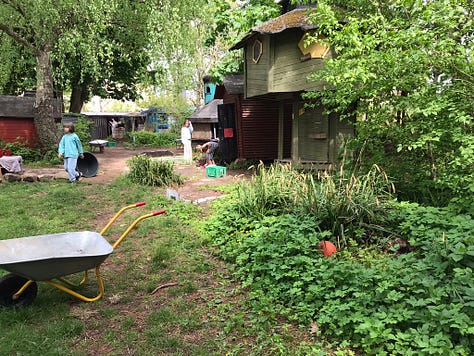
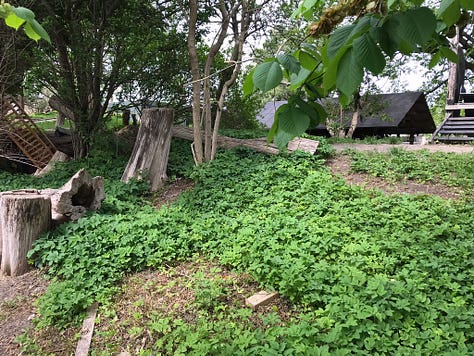
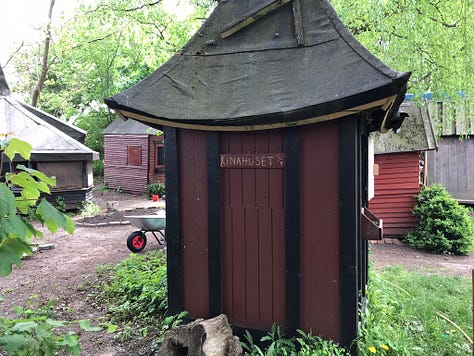
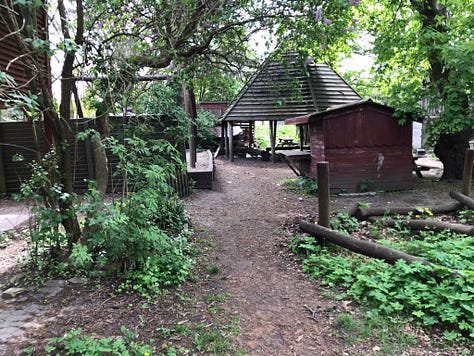
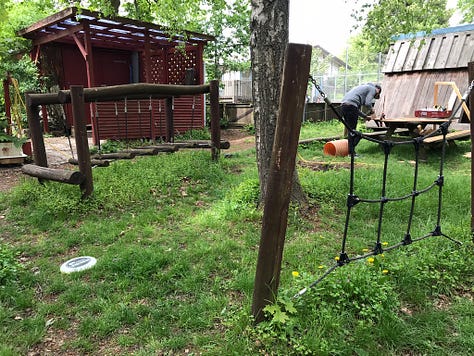
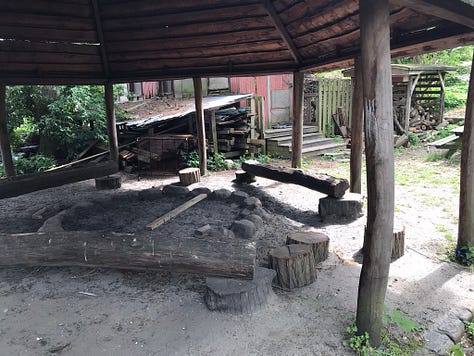
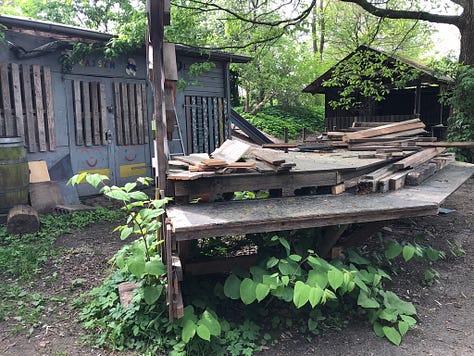
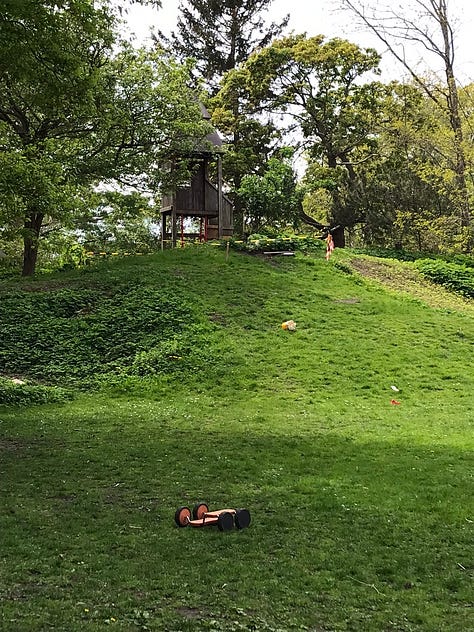
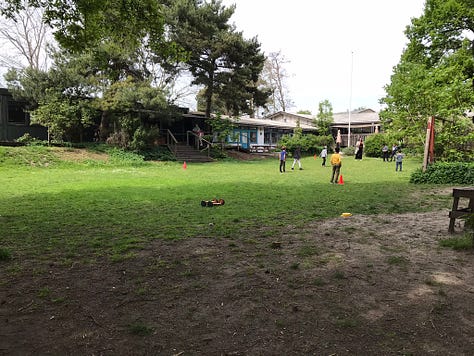
notes: ology - means a subject of study; a branch of knowledge. Implying junkology is the knowledge of junk.
This post is inspired by, and refers to “Legepladsen afspejler historiens børnesyn” by Knut Holt Nielsen (2022). https://dpu.au.dk/asterisk/asterisk-102/legepladsen-afspejler-historiens-boernesyn
for more on this topic
Principles for Loose parts PLAY
Firstly I think it is important to consider that there are loose parts and there are materials. These things can be the exact same things. It is not the stuff that is the loose part but how we interact with them. If we are using acorns and leaves to glue onto paper, or as tools for counting practice - then they are not loose parts, they are materials - …
Principles of Loose Parts TEACHING
This extends my thinking about loose parts play to how loose parts can be incorporated into our teaching as well. Teaching and Play are two different threads of Original Learning - play can happening when we teach, but teaching cannot happen in play -because then we have shifted the intrinsic motivation of play into an extrinsic motivation of teaching o…


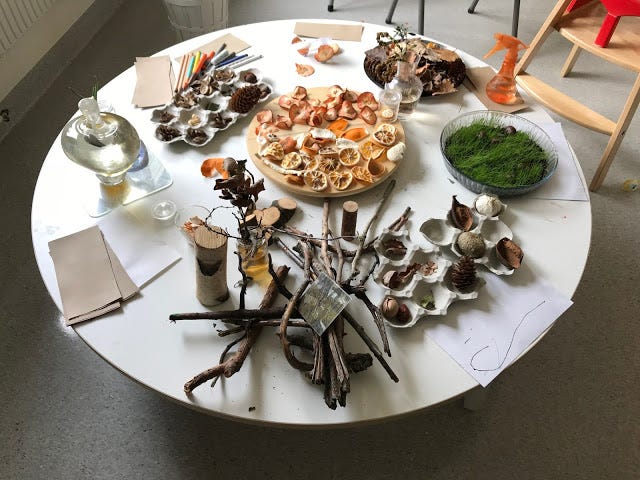
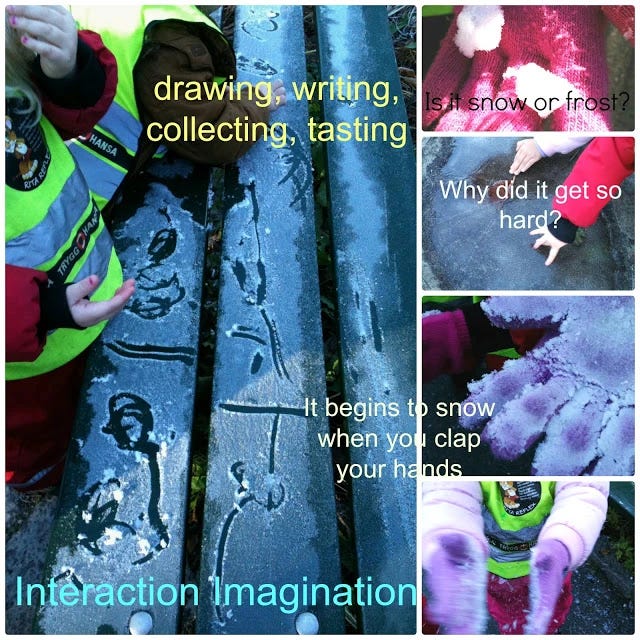
Love words. This a good one. Especially the presentation part. What a great way to explain how it can vary. Thank you, my class will love this.
Love it! I really like you diving into the meaning of junkology, presenting it for us and also the transformation to stuffology! This is what I do all day long now at the atelier! Stuffology! Thank you my friend🤗💚